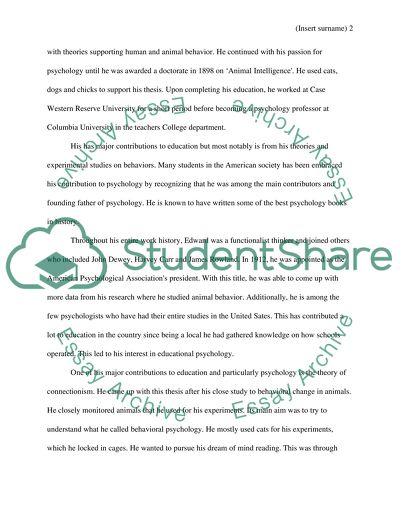Cite this document
(“Edward Lee Thorndike Essay Example | Topics and Well Written Essays - 1750 words”, n.d.)
Edward Lee Thorndike Essay Example | Topics and Well Written Essays - 1750 words. Retrieved from https://studentshare.org/education/1630474-edward-lee-thorndike
Edward Lee Thorndike Essay Example | Topics and Well Written Essays - 1750 words. Retrieved from https://studentshare.org/education/1630474-edward-lee-thorndike
(Edward Lee Thorndike Essay Example | Topics and Well Written Essays - 1750 Words)
Edward Lee Thorndike Essay Example | Topics and Well Written Essays - 1750 Words. https://studentshare.org/education/1630474-edward-lee-thorndike.
Edward Lee Thorndike Essay Example | Topics and Well Written Essays - 1750 Words. https://studentshare.org/education/1630474-edward-lee-thorndike.
“Edward Lee Thorndike Essay Example | Topics and Well Written Essays - 1750 Words”, n.d. https://studentshare.org/education/1630474-edward-lee-thorndike.


